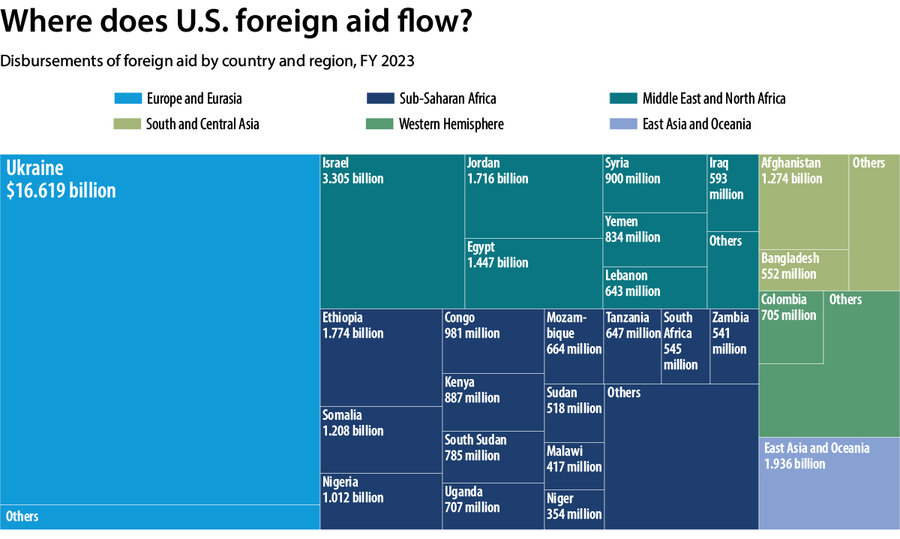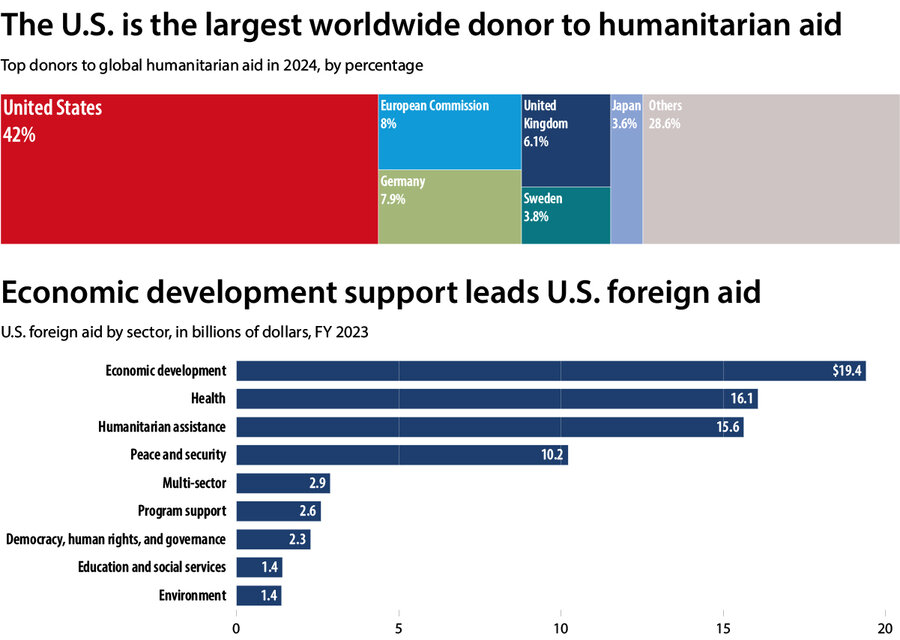When Donald Trump took office as president on Jan. 20, the U.S. Agency for International Development (USAID) was the world’s largest foreign aid organization, with a staff of more than 10,000 people and an annual budget of around $40 billion.
At the stroke of midnight Saturday, it will effectively cease to exist, at least for now. All but around 300 of its staff have been placed on “administrative leave,” and employees posted overseas have been ordered to return to the United States within 30 days. The move caps nearly three weeks of efforts by the Trump administration to dismantle America’s foreign aid infrastructure, which the president and his advisors argue is bloated, inefficient, and out of step with American values.
The administration is “feeding USAID into the woodchipper,” boasted Trump advisor Elon Musk in a Feb. 3 post on his social platform X.

ForeignAssistance.gov
|
Jacob Turcotte/Staff
Why We Wrote This
The Trump administration is moving to close down USAID, the biggest foreign aid organization in the world. Where does American aid go, how much does it cost, and who benefits from it?
USAID’s rapid evisceration began with an executive order Mr. Trump signed on his first day in office, pausing all American foreign aid for 90 days. Then Mr. Musk’s Department of Government Efficiency – which despite its name, is not an actual federal department – moved in.
Meanwhile, around the world, U.S.-funded aid projects ground to halt. A migrant shelter in Mexico fired its doctor, social worker, and child psychologist. A community organization in Zimbabwe stopped an outreach program to keep girls in school and out of child marriages. A helpline for veterans and their families in Ukraine abruptly disconnected. An independent investigative media outlet in Bosnia fired a reporter. Lifesaving medicines were trapped in a Sudanese port, with no way of transporting them to their destinations across the war-stricken country.
A few USAID-funded projects have now received an “emergency humanitarian waiver” to continue operations, though it remains unclear to many whether they qualify. At the same time, two trade unions representing USAID workers have filed a suit against the government, arguing the jettisoning of the organization’s staff and projects is unconstitutional.
For his part, Mr. Trump has promised that the upheaval at USAID will not spell a total end to U.S. foreign assistance.
Rather, he says he wants to reform the agency. In that, he may find popular support. Polls have shown a majority of Americans believe the country spends too much on foreign aid (although they also believe it makes up a quarter of the U.S. budget, when in fact it accounts for less than 1%).
Still, many argue American aid isn’t just a bleeding heart, do-gooder project of “radical left lunatics,” as Mr. Trump recently claimed, but a vital element in maintaining support for the U.S. around the world.
“What I want to just express to the American people is that USAID and the work that they’re doing, it’s not charity,” said Senator Andy Kim, D-N.J., in an interview with Slate this week. “This isn’t American altruism. This is something that is so vital to our national security.”

